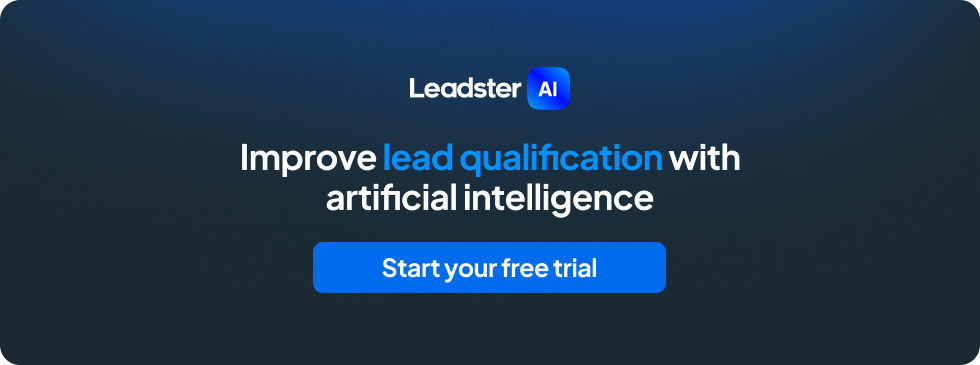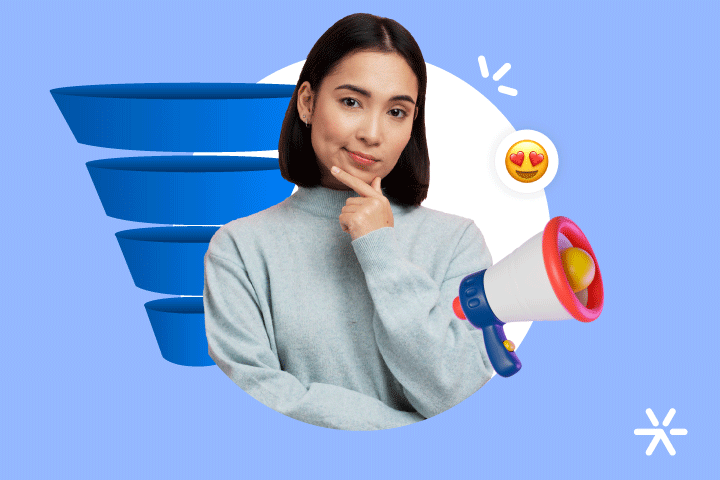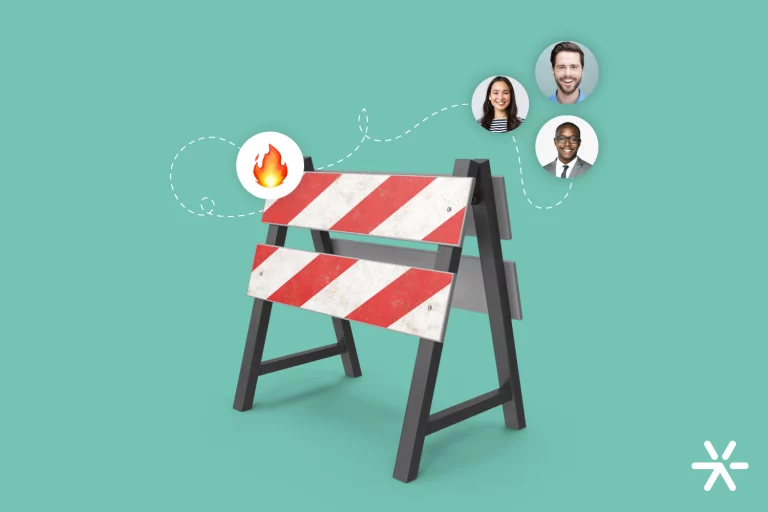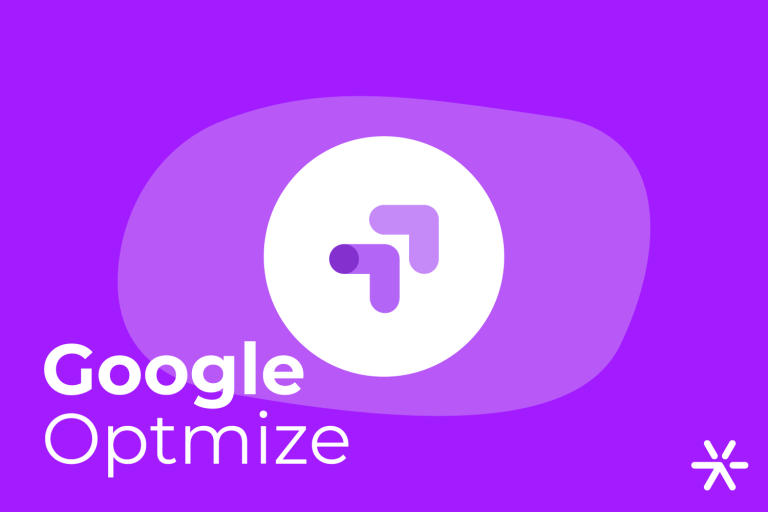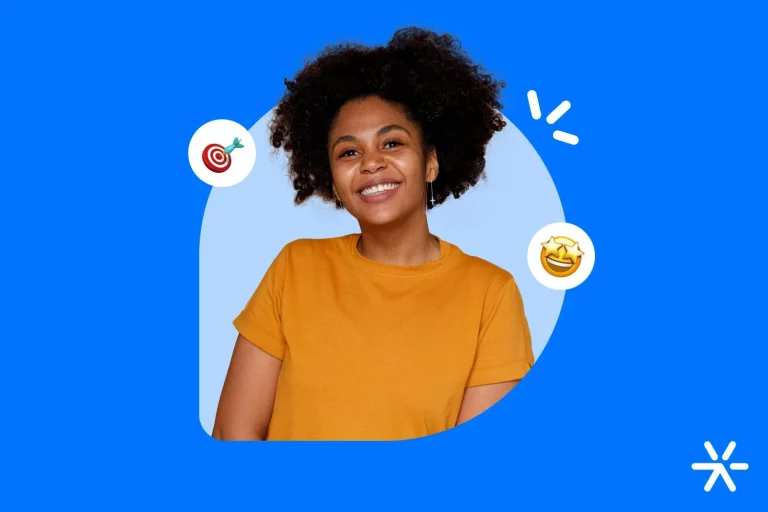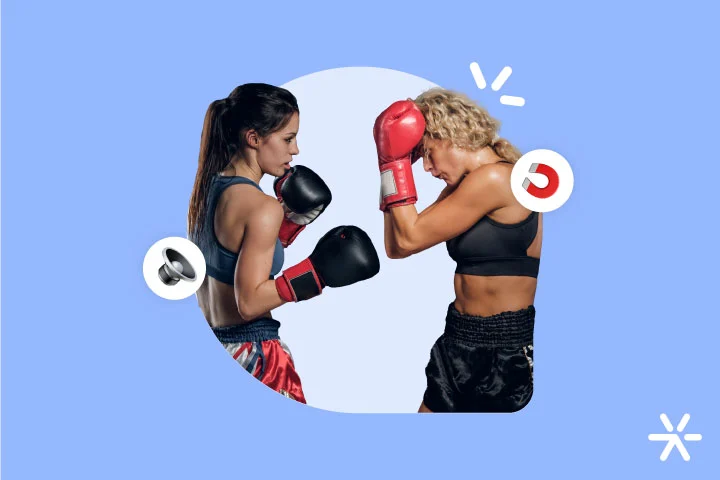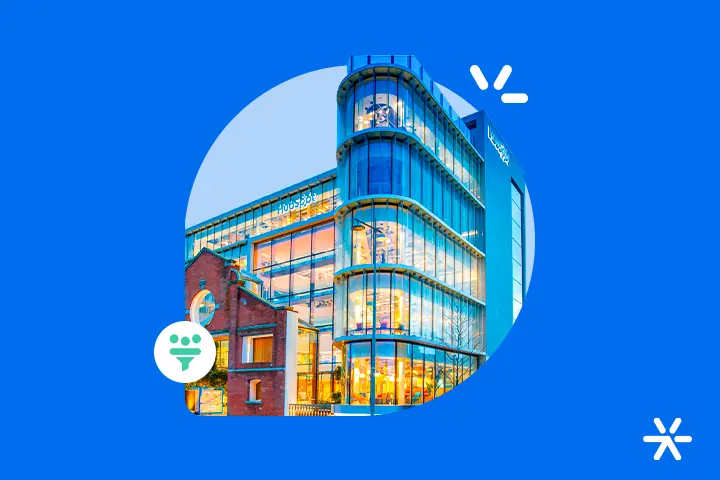Everything and More about Digital Marketing Funnel [Complete Guide]
The marketing funnel, or digital marketing funnel, is the primary tool for brands and businesses that want to analyze consumer behavior.
With it, you can identify areas for improvement in the buying journey, as well as opportunities for growth, lead generation, and qualification.
A digital marketing funnel also helps you uncover potential bottlenecks in your lead generation strategy and understand how they are impacting your results.
Let’s now explore the stages of this funnel, how it relates to the consumer journey, the most common issues, and how to solve them.
Keep reading the article!
What’s the Difference Between a Sales Funnel and a Marketing Funnel?

The marketing funnel and the sales funnel are interconnected, and we can say that they are two concepts working toward the same goal.
The objective is to guide potential customers toward a purchase, from their first interaction with the brand (at the top of the funnel) to the final transaction (at the bottom of the funnel).
Often, marketing and sales funnels also include post-sales stages.
With the growth of Inbound Marketing and marketing teams becoming increasingly responsible for sales results, the term “marketing funnel” has gained more relevance.
However, regardless of how your strategy defines the funnel, marketing and sales should work together to create an efficient funnel and consumer journey that delivers results.
What Is a Marketing Funnel?
A digital marketing funnel is a strategic tool designed to guide consumer interest in a solution and direct them through the journey until they complete a purchase or hire a service.
Consumers enter the funnel as visitors and are nurtured through different stages, becoming leads, then qualified leads, and finally, customers of your business or brand.
Depending on your company’s strategy, the lead may need to be transferred to the sales funnel before closing the deal.
What Is a Sales Funnel?
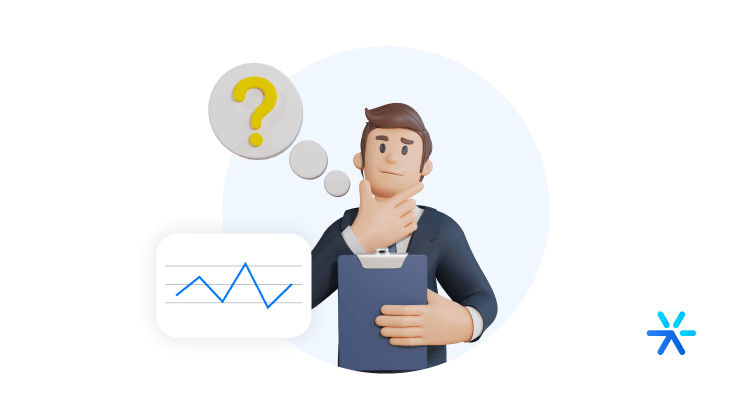
The sales funnel, or sales pipeline, begins when marketing hands off a lead to the sales team.
In an Inbound strategy, for example, it starts after the lead has been nurtured and qualified by marketing. The sales team then takes over, using different sales approaches to move the lead through the funnel.
In a sales funnel, potential customers may go through stages such as deeper qualification, meetings, product trials or sample testing, proposal submissions, and negotiations before ultimately making a purchase.
To get a complete view of your strategy, marketing and sales funnels can be seen as a natural continuation of each other.
However, in daily operations, each team will focus on different tasks, metrics, and strategies.
A great way to visualize the entire funnel is by using Pirate Metrics (AAARRR), named after the sound pirates make in movies and cartoons:
- A – Awareness
- A – Acquisition
- A – Activation
- R – Revenue
- R – Retention
- R – Referral
By understanding these phases, you can better identify bottlenecks and areas for improvement in your process.
We’ll cover this topic in more detail later in this article.
How Does the Marketing Funnel Relate to the Consumer Journey?
The consumer journey is the path a buyer takes from identifying a problem or need to purchasing a product or service that solves it.
This journey includes different ways to capture attention and communicate with potential customers.
The stages of the consumer journey are:
- Awareness & Discovery
- Problem Recognition
- Solution Consideration
- Purchase Decision
Each stage of the consumer journey corresponds to a stage in the digital marketing funnel:
- Attracting Visitors
- Converting Leads
- Engaging with Opportunities
- Closing Sales with Customers
Where to Apply the Marketing Funnel?
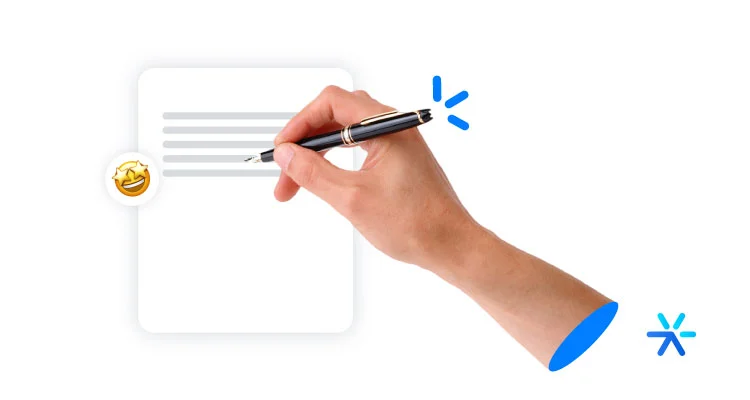
The marketing funnel is a framework that helps develop content, actions, and strategies across various channels and business objectives.
It’s important to integrate everything planned and executed in marketing into the funnel to align efforts with the consumer journey.
Here are some practical applications of the marketing funnel in different channels and strategies:
Landing Pages
Landing pages play a role in all funnel stages, not just converting visitors into leads.
- Top-of-funnel LPs: Offer free resources like ebooks, videos, and newsletter signups.
- Middle-of-funnel LPs: Provide deeper resources like spreadsheets, calculators, or industry reports for lead qualification.
- Bottom-of-funnel LPs: Feature high-conversion offers like consultations, product demos, and direct sales.
Ads & Offers
Ads should be tailored to all funnel stages. What attracts a first-time visitor differs from what influences a qualified lead ready to buy.
Use the right language, visuals, and offers, and promote landing pages through ads that align with different stages of the consumer journey.
Rich Content & Blog Posts
Content should educate, inform, and address consumer pain points at all stages.
To create high-performing content, think about your buyer personas’ challenges at each stage and focus on helping them rather than just promoting your brand.
Relevant content attracts customers naturally, without feeling intrusive.
🔎 Learn more: Blog to Generate Leads: 10 Essential Strategies
Email Marketing
Email marketing remains a powerful tool for lead nurturing, boosting sales, and improving conversion rates throughout the funnel.
Just like other content, emails should be tailored to each lead’s profile, using segmentation to deliver the right message at the right time.
Marketing Channel Mix
When building a marketing strategy, consider how each channel fits into the funnel structure.
For example:
- Top of Funnel → Social Media for attracting visitors
- Middle of Funnel → YouTube for problem recognition and education
- Bottom of Funnel → Landing pages and ads for consideration and purchase decisions
By aligning your marketing efforts with the consumer journey, you can optimize lead generation, improve conversions, and drive long-term business growth.
What Are the Stages of the Marketing Funnel?
Okay, you now understand the stages of the buying journey and how they relate to the marketing and sales funnel.
Now, let’s dive deeper into this topic.
When we talk about funnel stages, we divide them into three:
- Top of the Funnel (ToFu, or Top of the Funnel);
- Middle of the Funnel (MoFu, or Middle of the Funnel);
- Bottom of the Funnel (BoFu, or Bottom of the Funnel).
It’s important to know each phase of the funnel to design the actions and type of marketing content that will be offered, according to the purchase maturity of the user.
Shall we explore each of them in detail?
Top of the Funnel – Attraction and Conversion
The first stage of the funnel, also called the top, is related to attracting visitors and converting them into leads.
In this phase, associated with learning and initial problem recognition, the visitor has little contact with the brand or the offered solution.
The focus at the top of the funnel should be on the pains and difficulties the visitor faces, not on selling.
How to Create Content for the Top of the Funnel?
For the top of the funnel, free and attention-grabbing content can be offered, such as blog posts and rich materials like e-books and infographics, provided to visitors through landing pages in exchange for personal information such as name and email. This marks the visitor’s first step in the digital marketing funnel—becoming a lead.
Middle of the Funnel – Relationship
The middle of the funnel, in turn, is related to problem recognition and consideration of a solution.
At this stage, we are no longer dealing with visitors but with leads who have previously engaged with brand content.
Here, the focus is still on the lead’s problem, but now more directed towards the type of solution that will resolve it.
We should focus on the solution, not yet on the brand they will choose for it.
How to Create Content for the Middle of the Funnel?
At this stage, the relationship between the brand and the lead strengthens.
It is also where most lead nurturing and qualification occur so that these contacts become opportunities and reach the final stage of the funnel—the sales stage—already warmed up.
To achieve this, explore email marketing, automation workflows, and useful tools for leads, such as more in-depth content on topics of interest, lists, and spreadsheets that can assist them.
Bottom of the Funnel – Sales
At the bottom of the funnel is the purchase decision stage.
Here, the lead already understands the problem they have and knows how to solve it; they just need to decide which brand or company to buy from.
In a well-structured funnel, this is the moment when the sales team takes action, approaching these consumers who are ready to close a deal.
How to Create Content for the Bottom of the Funnel?
Bottom-of-the-funnel offers can include free samples or trials, as well as more commercial and persuasive materials, with special conditions, complete catalogs, and other advantages.
Marketing can and should also create materials to support the sales team at this stage.
Why Is It Important to Work with a Digital Marketing Funnel?

Having a well-structured marketing funnel optimizes resources and investments while delivering benefits to the team, consumers, and the company:
- Delivers a consistent message to consumers. Understanding your audience’s needs allows you to create a more consistent message across all brand touchpoints.
- Makes closing deals easier. With a marketing funnel, you deliver qualified leads to the sales team, increasing conversions and company results.
- Saves time and effort for the team. With planned actions, your team doesn’t need to figure out the next step in consumer interaction since it is already mapped in the digital marketing funnel.
- Helps create a more accurate sales forecast. The funnel helps track the return on actions, the number of leads generated, qualifications, and opportunities passed to sales. This makes it easier to predict efforts and investments needed to maintain or grow results according to business goals.
- Aids in customer retention. The marketing and sales funnel doesn’t end at the purchase stage. Post-sales efforts are also designed to maintain the relationship with customers, increasing the chances of repeat purchases and retention.
4 Examples of Marketing Funnels from Large Companies
The configuration of marketing and sales funnel stages always follows the structure of top, middle, and bottom of the funnel.
The types of strategies applied to the marketing funnel vary according to the type of business and company goals.
To illustrate, here are some models of different applications of the digital marketing funnel.
Forrester / SiriusDecisions
Forrester (formerly SiriusDecisions) is a globally recognized consulting and research firm.
The company has a robust sales funnel, continuously optimized over time, and frequently shares its insights and learnings with the public.
Because of this, Forrester is considered a reference by many professionals in constructing their own marketing and sales funnels.
Below, we show three versions of the funnel, according to its evolution over time:
- The first version, from 2006, closely resembles the traditional funnel format, with MQLs, SQLs, closed deals, etc.
- The 2012 version, much more robust, considers the lead sources, dividing them into inbound and outbound.
- The 2017 version is a more visual representation of the previous funnel, focused on the company’s new strategy: Account-Based Marketing (ABM), where prospecting accounts is at the top of the funnel.
DemandGen
DemandGen is a U.S.-based company that offers consulting, management, and data analysis services for businesses looking to improve their digital marketing strategies.
The interesting aspect of this example is that it doesn’t just consider the marketing funnel but also the steps a customer goes through until they expand their service package or make a repeat purchase. (Remember pirate metrics?)
Bonus – Leadster
You’ve probably noticed that every funnel is unique, as it must align with a company’s goals and strategies.
To illustrate further, here’s how our funnel works at Leadster.
At the bottom of the funnel, we divide leads into PQLs (Product Qualified Leads)—those who implemented the tool on their own—and SQLs (Sales Qualified Leads)—those who required contact with the sales team before implementation.
This differentiation is important because each “branch” of the funnel has different metrics, such as acquisition cost, closing time, and contract value.
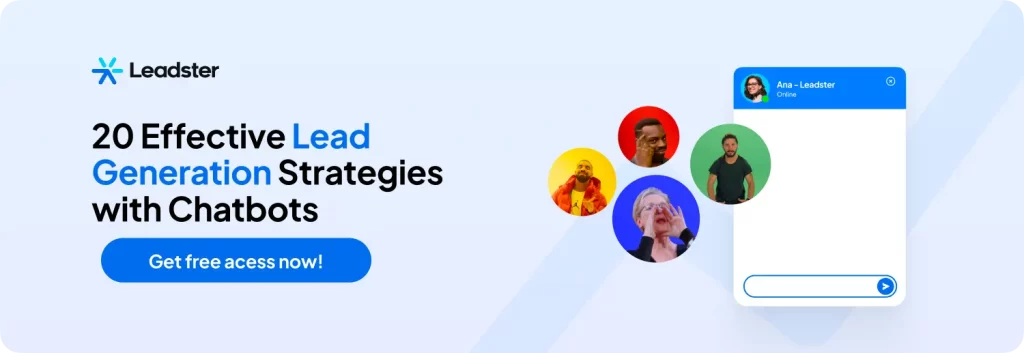
How to Build a Marketing Funnel?
Follow our step-by-step guide to create your own digital marketing funnel:
1. Determine which product you will offer
The marketing funnel must be tied to a specific product or service since the dynamics, solutions, and benefits vary significantly—and these factors impact the funnel’s characteristics.
If your company offers different product or service categories, you may need to build separate marketing funnels for each one.
2. Define who the persona consuming the offer is
Just as the product/service can change the entire marketing flow, the persona can too.
It is quite common for companies to have more than one persona.
Therefore, each flow can be designed according to this specific audience, ensuring alignment with the needs, pains, and challenges of the targeted consumer.
🔎 Learn more: Brand Persona and Buyer Persona: Differences and How to Develop Each One
3. Purchase Journey
Before structuring the flow (with materials, actions, and marketing efforts), it is worth mapping out the purchase journey of each persona, considering their needs, desires, and what they seek at each stage of the funnel (top, middle, and bottom).
This step greatly helps in later defining the channels, materials, themes, and language to be used.
4. Create Your Offer
What offers will be made available throughout the flow for conversion points?
For each marketing funnel, you will need at least one attraction offer for the top, one qualification offer for the middle, and one purchase decision offer for the bottom of the funnel.
5. Automate Email and/or Message Flows
To ensure your digital marketing funnel runs automatically, you can use marketing automation tools to send emails or messages automatically when the consumer reaches certain points in the flow.
6. Build a Landing Page
Remember the offers from each funnel stage we discussed earlier?
They need to be made available and promoted through specific pages focused on conversion, such as Landing Pages.
Again, you can and should explore this type of material at different stages of the journey, and you can also consider replacing them with other solutions such as forms and chatbots.
The key here is to remember that these solutions aim to capture visitor or lead data in exchange for the offered content, just like LPs.
7. Connect Every Element of Your Sales Funnel in Digital Marketing
If you have a funnel running on an automation platform, all communication and digital marketing must be aligned and connected to this funnel.
You can monitor site visits, blog traffic, social media posts, and advertisements linked to the funnel.
8. Drive Traffic to Your Destination Page
Whether through Landing Pages, chatbots, or forms on your site, you need a volume of visitors arriving so they can convert through the offered hooks.
Therefore, driving traffic to these pages is essential, especially qualified traffic.
To achieve this, you can explore paid media solutions, SEO, conversion rate optimization (CRO), content production, and social media sharing.
9. Establish Loyalty
Think of marketing funnel actions for post-sales engagement.
This way, you remain present for the consumer in case they need anything, maintain a closer relationship, enhance satisfaction with the purchase, and increase loyalty, boosting the chances of repeat business.
10. Test and Optimize Your Funnel
Even after your funnel is ready and running, optimizations can be made at any time.
To achieve this, monitor data and metrics for each funnel stage, benchmark to assess the quality of achieved numbers, identify bottlenecks in the funnel, conduct tests…
This way, you can improve necessary aspects and create an increasingly refined and result-driven funnel.
Types of Digital Marketing Funnels
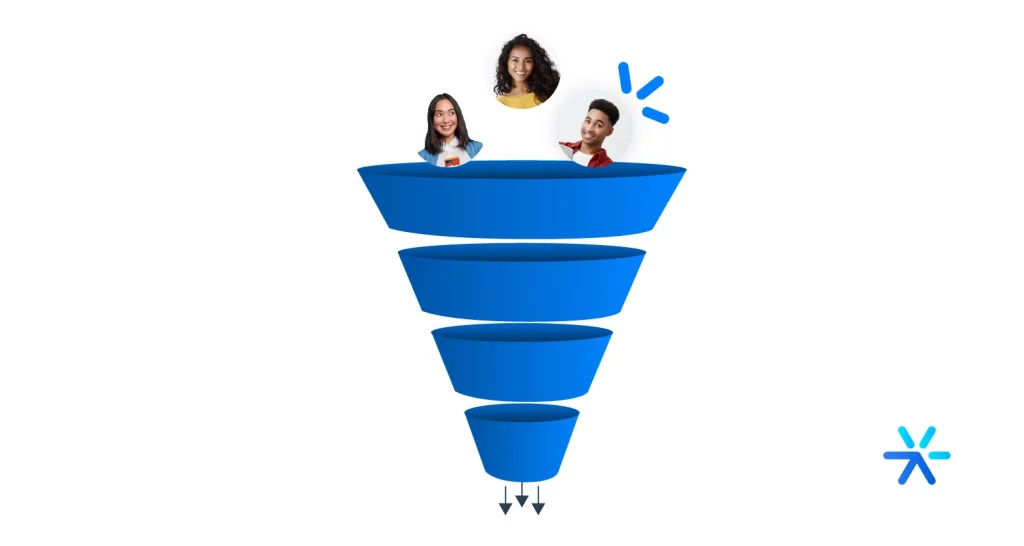
We also need to understand that the Digital Marketing Funnel can be used in ways quite different from what we commonly see online.
Even in this article, for instance. Understanding the Digital Marketing Funnel entirely also means recognizing that it can—and should—be customized according to your actions, campaigns, and strategies.
Today, nearly any Digital Marketing strategy calls for a well-constructed Funnel.
But some strategies offer the opportunity to create specific Marketing Funnels tailored just for them.
For example: You start applying Content Marketing in your company. As an Inbound Marketing strategy, Content Marketing is usually placed at the top of the Funnel.
However, Content Marketing is not only used at the top of the Funnel. Even within this stage, there are differences between blog content, YouTube content, Lead Magnets, etc.
It is possible to create a Content Funnel to formalize the role of content within the overall Digital Marketing Funnel strategy.
There are several types of Funnels that work this way: a zoom into a specific part of the strategy seeking standardization of activities.
Let’s now explore some types of Digital Marketing Funnels.
The Sales Pipeline
We mentioned the sales pipeline earlier in the article. It’s important to revisit it here because it is one of the most important funnel types.
As we discussed, many people prefer to separate the Digital Marketing Funnel from the Sales Funnel, and creating a sales pipeline is one reason for this distinction.
The sales pipeline has several well-defined stages:
- Prospecting: The task of finding new clients. If there is already a formalized Digital Marketing Funnel, this part is usually its responsibility. However, an Outbound pipeline may take on the responsibility of finding new prospects through active prospecting;
- Qualification: The process of determining whether these prospects are the best fit for your business objectives and align with your ICP. This is when you truly understand who these people are;
- First Call: This can be a meeting to better understand the prospect’s needs or a presentation of your product or service. The key here is recognizing that this is your first interaction with the person;
- Pitch: This is where you present your product, deliver a formal proposal, and start the negotiation process. The pitch can also happen within the first call stage;
- Negotiation and Closing: Self-explanatory. This is the moment where you assess the potential client’s limitations and provide assistance where possible;
- Post-Sales: Another crucial part, related to repeat business and contract maintenance, if applicable.
This is a case where it is necessary to zoom in on the Funnel to structure each of these essential stages.
The Digital Marketing Funnel focuses most of its marketing efforts on the early stages, leaving sales to the latter stages.
By separating the Sales Funnel from the Pipeline, some stages become more prominent—post-sales, for instance, is often overlooked in marketing departments with heavy workloads.
Through the pipeline, responsibilities can also be better defined. The sales team has a more structured framework to work with, leading to more effective selling.
The Content Funnel
Here, we are not necessarily dealing with an entirely new type of Marketing Funnel with different stages.
Instead, this effort aims to standardize content production according to the stages of the Marketing Funnel you have already established.
In other words, the more complex your Funnel, the more descriptive the organization of your Content Funnel needs to be.
Although the Marketing Funnel does not have many stages, companies often delve deeply into the details of each stage when building it.
Because of this, you can construct a Content Funnel to determine what to communicate at each stage.
Example: Consider a B2B company that resells green energy credits for waste recycling.
- Top of the Funnel: Articles explaining what energy credits are, how to perform selective waste collection in a company, what the waste collection regulations for businesses are, etc.
- Middle of the Funnel: Showcasing how companies profit from this work, how waste is processed, how recycling actually works, and how contracts with recyclers function;
- Bottom of the Funnel: Explaining the hiring process, pricing, what benefits companies receive, and how to choose the best service provider.
By structuring a Content Funnel, companies can strategically define how content supports marketing and sales efforts at each stage of the customer journey.
The content, when included in your Marketing Funnel and nowhere else, ends up being created in a poorly structured way.
And then problems can arise: you have a good number of visitors, but they do not convert into leads, for example.
The Content Funnel allows you to structure all the topics covered at each stage, ensuring better strategy utilization and, at the same time, fewer errors.
Cold Funnel
In some cases, you will unfortunately have to work with cold lead lists.
Companies that use active Outbound acquisition and do not work with Inbound still need to generate leads in some way.
However, Inbound generates leads differently. It is based on non-intrusive techniques, waiting for the lead to come to the Marketing team, which qualifies them and sends them to the Sales team.
100% Outbound operations do not generate leads in this passive and almost automatic way. Inbound takes time to start delivering results, but once they come, they continue for a long time.
Without this lead generation machine, Outbound often has to resort to approaching cold leads from a list.
It follows these steps:
- List organization: Strategy to generate or organize the lead list. Where will it come from? Who will generate it? How? And afterward, who will approach the leads and how? This is the moment to strategize your work. It is very important and highly variable. Everything depends on the state of the list;
- Qualification: It is necessary to understand how usable the lead list is. This is done by sending emails and directly contacting the leads to determine which ones are worth approaching and which ones are not available;
- Follow-up: Through follow-ups, you gradually introduce your brand and understand your prospect’s needs. However, these follow-ups need a purpose. You shouldn’t just reach out to offer your product. Maybe invite them to an event or a webinar;
- Pitch: Once you have established a good relationship with your leads, you offer your services or products.
This Funnel is quite difficult to work with since it deals with people who often do not even know your brand well.
It is widely used in B2B, mainly because this direct approach, carried out by SDRs aiming for a negotiation, is more common in this modality.
However, that does not mean that B2C brands do not engage in this type of work. It is more common in the service sector.
But this is an important topic: What is the difference between B2B and B2C when creating a Funnel?
What is the difference between the B2B and B2C marketing funnel?

B2B and B2C consumers go through the same funnel structure (top, middle, bottom), but there are differences in the process, as the purchasing dynamics of these sectors are distinct.
How to create a B2C marketing funnel?
When we talk about selling to the end consumer, the decision for the brand or solution is usually made directly by that consumer.
In larger or more complex sales, such as buying an apartment, for example, other influencers may be involved in the process, or the decision may be made collectively with the family.
Even in these cases, the funnel typically has a shorter cycle and focuses on the decision-making persona.
Other characteristics, such as impulsiveness, emotional factors, and faster research about the solution, need to be considered.
Additionally, sellers only take action in the sales funnel after the consumer has already been nurtured and qualified by marketing.
How to create a B2B marketing funnel?
In the B2B marketing funnel, since the negotiation takes place between two companies, many people are involved in the marketing impact process, negotiation, and purchase closure.
Sales cycles are longer, with closer and more personal contacts, and decisions are based on more rational factors.
Often, marketing and sales work together from the start of the funnel, supporting each other’s strategies to strengthen the relationship between the selling company and the buying company.
Precautions when Building a Marketing Funnel
Following the step-by-step process we recommend is the best way to build a well-structured and results-driven digital marketing funnel.
After all, companies must build this flow considering the offered solution, the audience, their needs and challenges, and how the solution fits into each phase of the buying journey.
Funnel models are useful, but be careful not to create something too generic.
Ensure that all stages are covered to avoid losing opportunities that reach your brand with different levels of purchasing maturity.
Finally, tracking metrics and making improvements is crucial to increasing conversion rates and, consequently, improving sales results.
How to Measure Success in the Marketing Funnel?
Some metrics help monitor the results of the marketing and sales funnel, and we will discuss the main ones below.
Before that, it is important to emphasize that, besides metrics, it is also useful to observe the profile and quality of leads to use the information in marketing segmentations and identify new business opportunities in the market.
Key Metrics to Track
- Cost per Acquisition (CPA): This metric measures the investment cost for each acquisition, aligned with the effort’s goal, such as lead acquisition or sales. To calculate CPA, divide the investment amount by the number of acquisitions.
- Customer Lifetime Value (LTV): Tracks how much a customer spends on purchases or contracts throughout their relationship with your company. This metric is crucial, especially for businesses offering recurring sales or services.
- Conversion Rates: The percentage of visitors who become leads, qualified leads who become opportunities, and opportunities who become customers. Conversion rates can be evaluated at every funnel stage.
- Conversion Rates by Channel: Just as conversion rates can be calculated by funnel stage, you can also specify this calculation for each acquisition channel to understand which are performing best. For example, ads may have one conversion rate, while organic search has another.
What are the main Problems at Each Stage of the Marketing Funnel?
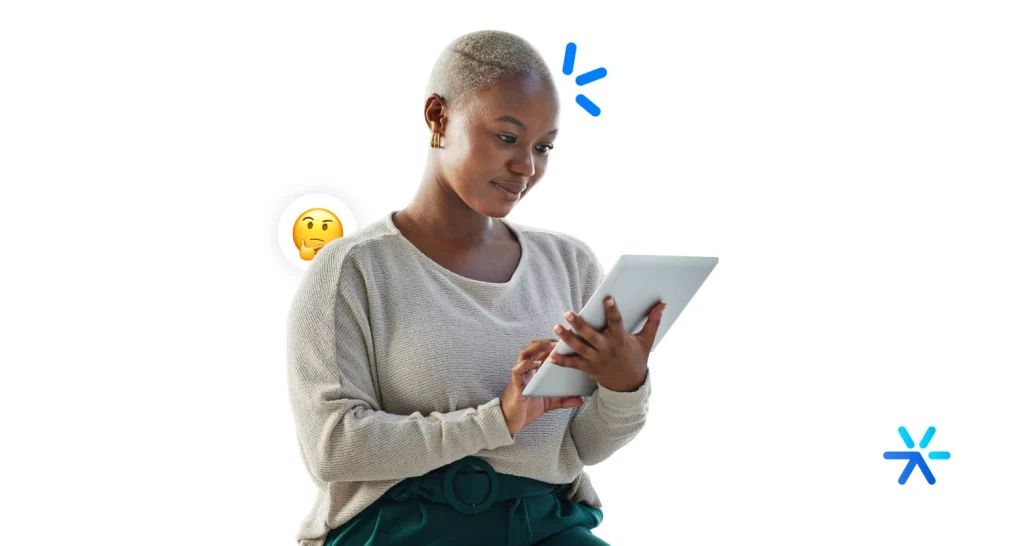
Some problems in digital marketing funnel actions are common, especially for companies transitioning to this methodology. However, even experienced companies can always learn and optimize their applied funnel.
We have outlined the main problems and solutions for each funnel stage:
Solving Problems at the Top of the Funnel
Few visitors, few leads
One of the main problems at the top of the funnel is acquiring visitors, which results in a low number of leads.
The funnel is named that way for a reason.
It is normal for the number of consumers to narrow throughout the process.
Not all visitors become leads, not all leads become opportunities, and not all opportunities become customers.
Therefore, you need a large number of visitors so that a portion of them advances to the next stage.
But if your company struggles to attract visitors to the top of the funnel, all other stages become compromised.
How to solve this?
- Invest in traffic campaigns for your Landing Pages and website;
- Implement marketing strategies for visitor acquisition through organic content, such as blogs optimized for Google searches or engaging social media content;
- Pay attention to the copy in your ads and materials directing visitors to your pages. Good copywriting makes a significant difference;
- Always use impactful calls to action, directing users to conversion-optimized pages.
Many Visitors, Few Leads
Another common problem at the top of the funnel is the low conversion rate.
This means that visitors are reaching the pages but are not turning into leads.
Low conversion rates can have different causes:
- The offer or content may not be interesting to the visitor;
- The pages may not be persuasive enough to encourage conversion;
- The language may not correctly communicate with the brand persona;
- The static form may ask for too much information or fail to generate interaction;
- The ads may not properly deliver what the visitor will actually find on the conversion page;
- Among other issues.
How to solve it?
- Understand your audience’s needs and interests. Only then will you be able to offer articles that drive conversion;
- Once again, written and visual language needs to be highly refined;
- Replace your static forms with more interactive tools;
- Invest in solutions like chatbots and virtual assistants. With personalized service, even for simple questions and interactions, the lead has a higher chance of converting after resolving their doubts and establishing a dialogue with the brand.
Solving Problems in the Middle of the Funnel
Many Leads, Few Qualified Leads
A typical mid-funnel problem is the generation of unqualified leads.
This means that you are managing to bring a significant volume of visitors to your website or pages and achieving a good lead conversion rate.
However, the audience does not engage throughout the marketing funnel, and leads reach the end of the process unqualified.
This indicates that marketing actions are not effectively nurturing, guiding, and generating interest in the offered solutions, or the converting audience is not genuinely interested in the brand’s solutions.
For example, suppose you generate a large number of people who download an e-book about gardening.
The audience you want to reach is retailers who could resell your equipment, which currently cannot be purchased directly by end consumers.
If you offer content that interests the general public, you will end up capturing many leads that will be useless for your sales team, as they will have only unqualified leads, even at the end of the funnel.
How to solve it?
- Understand your audience’s profile when developing articles, themes, and acquisition strategies. Ensure that what you are creating interests the audience you want as customers;
- Define the lead qualification criteria at the beginning of the buyer’s journey;
- Involve the sales team in lead nurturing and qualification;
- Offer the right content for each stage of the journey;
- Test different qualification hooks in automation flows.
Solving Problems at the Bottom of the Funnel
Many Qualified Leads, Few Sales
Now, if your problem is at the bottom of the funnel, the scenario is different.
Here, we have a high number of visitors, satisfactory conversion rates, lead and opportunity qualification…
But the sales team is struggling to close deals.
This may indicate a strong marketing process but a weak sales process.
How to solve it?
- Conduct surveys with qualified leads to understand why they are closing deals with another brand instead of yours;
- Review the sales process and commercial approach;
- Support the sales team with auxiliary materials and follow-up systems for generated opportunities.
4 Tools to Increase Conversions Throughout the Funnel
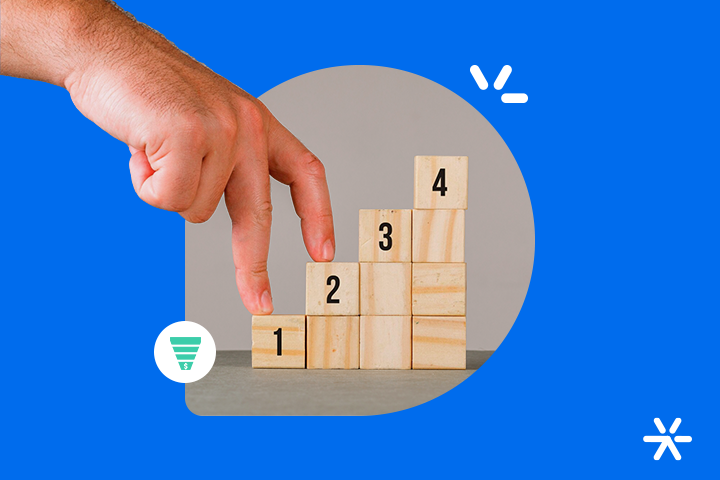
Optimizing funnel conversion does not have to depend solely on adjustments in articles, channels, and formats.
Structural changes can often be made, or even tests and automated tools can be used to identify weak points and adjust what is necessary to achieve the best results.
Here are some of them:
Leadster
With Leadster, you replace static forms with chatbots that simulate human interaction with visitors.
This type of tool has higher conversion rates since it can personalize the approach for each visitor based on data such as access source, accessed page, device used, etc.
Besides personalized approaches and lead qualification, Leadster also distributes leads intelligently, conducts A/B tests to determine the best conversion call, automatically schedules meetings with qualified leads, provides lead location data, and analyzes all metrics on a simple and functional performance dashboard.
In addition to the free plan (limited to 30 leads) and three paid plans – Starter (R$189/month), Traction (R$296/month), and Growth (customized) – you can test all of this for 14 days for free!
Hotjar
This is one of the most well-known heatmap tools, providing insights into user behavior on site pages.
With this type of mapping, you understand where users spend the most time, where they click, and even what they ignore on your funnel pages and landing pages.
Google Analytics + Google Optimize
Google Analytics helps understand visitor flow on pages, acquisition channels, as well as quantitative metrics on user behavior and individual page performance.
Google Optimize is designed for marketing and design strategies, focusing on site optimization and CRO (Conversion Rate Optimization).
Through a tracking snippet system, page and audience segmentation settings, the platform allows for tests and analyses on sites, pages, and their elements.
This helps identify different combinations and versions to determine the most impactful improvements for the brand.
The result is a better visitor experience and higher conversion rates.
How to Set Up a Marketing Funnel in Google Analytics?
You can set up your marketing funnel using Google Analytics and monitor results there.
If you are starting to build your first funnel, this tool can help you.
Keep in mind that the funnel is more basic in this case, and you cannot access retroactive data prior to configuration.
To create the funnel on the platform, you need to create or log into an existing account linked to the site and define the objectives for each stage.
The complete step-by-step guide and all other relevant information can be found directly on the Google Analytics support page.
The Inverted Marketing Funnel: Customer Experience and Success
Besides the traditional digital marketing funnel model, other formats can be explored – one of them being the inverted funnel.
In this model, which focuses on customer experience and success, leads are nurtured post-sale to later become brand advocates and educators, fueling the marketing and sales funnel in a virtuous cycle.
🔎 Also read: [Complete Guide] How to Succeed in Post-Sales
Now that we understand that a well-applied marketing funnel is an incredible tool for marketing and sales, it’s time to enhance your strategy even further by using software that can speed up, optimize, and generate better results for your business.
I’m talking about Leadster! With our conversational marketing chatbot, you capture leads through personalized approaches, qualify them, and distribute them intelligently.
Just with these features – among many others – you will gain deeper insights into your audience, analyze bottlenecks in your flow, and confirm which strategies are yielding results.
Don’t waste more time and start using Leadster now with a 14-day free trial!
